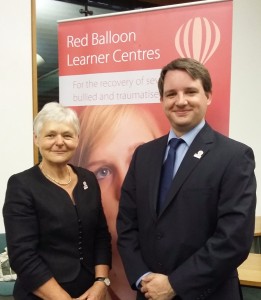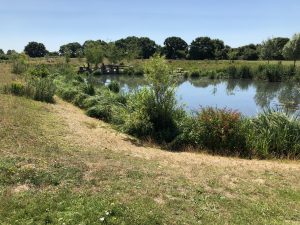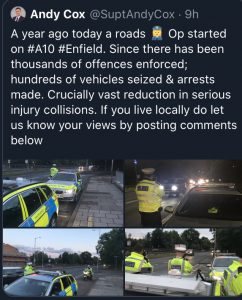 Increasing numbers of pupils are being excluded from schools – with special education needs (SEN) being over six times more likely to be excluded.
Increasing numbers of pupils are being excluded from schools – with special education needs (SEN) being over six times more likely to be excluded.
I have written previously about the 16,000+ bullied school children that are school phobic and who are pushed outside the mainstream education system, but the issue is broader – affecting pupils with a range of challenges, including; mental health (50% of mental health issues are established at the age of 14), SEN, poverty, home environment and personal trauma to name but a few.
To be clear, I support schools having the right to expel unruly children. Disruptive children in class can absorb ten minutes of every teaching hour.
However, there is a growing evidence base that exclusions are being used in some schools for all the wrong reasons and casting pupils into the Alternative Provision (AP) sector, which has little oversight and patchy academic results (only 1.1% of pupils in Alternative Provision secure five good GCSE passes).
Exclusions
Fixed term exclusions have risen to 381,865 – an increase of 114,345 since 2012 – with at times a limited paper trail of decision making (16% of the time, the reason is left as ‘other’!).
The Children’s Commissioner Report of 2017 flagged specific concerns over the use of exclusions and reported breaches of the UNCRC. The call for action is not new, in 2010, Barnardo’s report ‘Not present and not correct’ hi-lighted concerns over the use of fixed-term exclusions and evidence of unofficial exclusions.
The cost to society of exclusion is high, the IPPR estimates this to be £370k per young person in a lifetime due to education, benefits, healthcare and criminal justice costs.
Exclusions are not capturing just the knife wielding bullies, but a wider group, for instance every school week 4,610 SEN pupils receive permanent and fixed term exclusions.
One pressure point could be that some schools cannot cope with complex pupils’ needs. The ‘Teacher Omnibus’ survey found that 18% of teachers do not feel able to meet the needs of a child with SEN with 30% stating that there is insufficient training provided to support SEN students.
For parents to fight an exclusion the odds are stacked against them, many not knowing their rights or being able to respond to the complex process involved. The safety net of the Independent Review Panel does not have the power to reinstate a pupil.
When a child is excluded, the school can effectively and neatly wash their hands of responsibility, which passes to the Local Authority.
Home Schooling
Another route out of the education system is known as ‘off-rolling’. Officially parents must formally request to home educate their child. Although the reality can be somewhat different.
It is now estimated that over 45,000 children are being home schooled, a near doubling compared to five years ago.
We heard reports of non-attending bullied children’s parents being threatened with truancy action and given the option to home educate.
Shouldn’t Ofsted inspections show what is happening?
According to the latest National Audit Office report, 1,620 ‘Outstanding’ schools have not been inspected for over six years, of which 296 have not be inspected for over 10 years. This lack of transparency provides for the opportunity of opaque decision making.
Alternative Provision (AP).
Alternative Provision is an umbrella term to include; state AP, independent AP, third sector provision and work base learning providers.
When schools exclude, responsibility passes to the Local Authority. If schools had a responsibility going forward, imagine the difference this would make – a real motivation for early intervention and ensuring quality AP provision if exclusion is required.
However, in many areas AP is a postcode lottery, with a lack of capacity in the system to support those with complex mental health and/or behavioural issues coupled with poor
Ofsted ratings.
Best practice can be observed in Cambridgeshire – where schools have set-up successful partnerships to scale up Alternative Provision and provide economies of scale. In 2015/16 the exclusion rate for Cambridgeshire was 0!
This model has been proven successful by the DfE themselves. Between 2011 – 2014 a series of pilots commenced involving 11 local authorities delegating funding and responsibility of excluded pupils to the schools themselves. The results of the pilots realised improved outcomes for pupils.
In the sector the DfE has no framework of what a model AP looks like, nor any real monitoring of the sector. It is an adjunct to the education system, rather than as part of the system. Due to this, we do not know exactly how many pupils are in AP, but an analysis of available data by the Education Select Committee found that at least 48,000 pupils are in
AP – and this figure is increasing.
Even when Schools commission AP themselves, the 2016 Ofsted report into Alternative Provision found that under a third of Schools embark on any systematic review of the education provided.
AP needs to be viewed not as a permanent silo, but as a short-term intervention, with the aim of pupils, where possible, returning to main stream education. For example, this has been achieved in the majority of cases at the Red Balloon Learner Centre Group, TBAP Intervention Centres and The Family School, London.
Conclusion
In a system that requires rigour and oversight we are seeing youngsters being failed – through a lack of transparency, accountability and silo-based thinking.
Only a systematic change, facing up to the weaknesses of the system and embracing the best practice that exists will help some of the most vulnerable youngsters in our society.
Recommendations:
1. Proper Reporting: Schools must provide greater detail of why a pupil is being excluded and what support they require. ‘Other’ will no longer be an option.
2. Schools maintain responsibility: That schools maintain educational responsibility for excluded children with a path back to mainstream education where possible.
3. AP Framework: That the DfE establishes a framework for how a model AP should operate with monitoring structures like mainstream education.
4. AP Support: DfE Implements a strategy to grow capacity, share best practice and improve standards (especially in poor performing Local Authority areas).
5. Home Education: That funding is provided to ensure the child has real education provision with a pathway back to mainstream schooling as an option to parents.
6. Independent Review Panel (IRP): The Education Act 2010 to be amended to allow the IRP to reinstate pupils.
7. Teacher Training: DfE to enhance and increase level of training and support, so that schools are better equipped to implement early intervention and when needed, commissioning effective Alternative Provision.
8. Exclusion rates: That Ofsted monitor schools exempt from inspection with high exclusion rates and/or off-rolling. Investigating where needed and Inspection as a reserve option.
 I received complaints about a contractor (on behalf of the Forestry Commission) pesticide spraying oak trees to deal with Oak Processionary Moth (OMP).
I received complaints about a contractor (on behalf of the Forestry Commission) pesticide spraying oak trees to deal with Oak Processionary Moth (OMP). the contractor and Forestry Commission.
the contractor and Forestry Commission.








